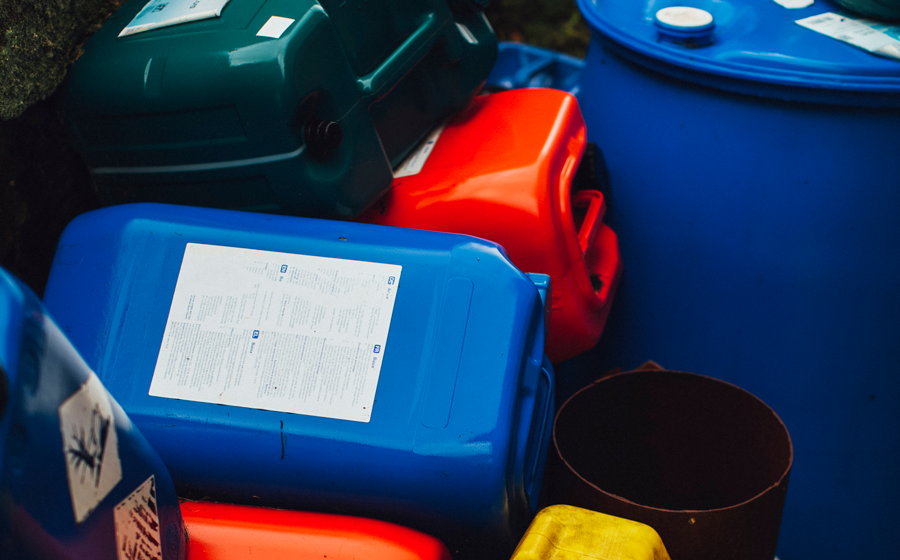Changes to workplace chemical laws in Australia

Changes to workplace chemical laws in Australia
Safe Work Australia recently announced that new guidelines would be introduced centred around the labelling and classification of chemicals.
Australia will begin a two-year transition to the Globally Harmonized System of Classification and Labelling of Chemicals Revision 7 (GHS 7) on 1 January 2021.
Here’s what this means for contractors.
Although there may not be any specific action you need to take just yet, it’s prudent to be aware that classification and labelling regulations are changing over the next two years.
After the intermediate transition period has ended, you’ll need to ensure your buying or using chemicals with up to date safety data sheets and appropriate labelling.

What is actually changing?
Safe Work Australia has recently published new guidance to help businesses navigate the transition to GHS 7. This includes details about classification and labelling requirements for workplace hazardous chemicals, and the duties of manufacturers, importers, suppliers and end users.
The transition to GHS 7 was due to start on 1 July 2020, however, was delayed due to the impact of COVID-19 on Australian businesses.
On 1 January 2021, Australia will begin a two-year transition to the 7th revised edition of the GHS (GHS 7). During the transition, manufacturers and importers may use either GHS 3 or GHS 7 to prepare classifications, labels and SDS for hazardous chemicals.
The actual changes include changes to the classifications and labelling requirements for aerosols, flammable gases, eye irritants and more.
More detailed information can be found at Safe Work Australia.
When is the final change over date?
From 1 January 2023, only GHS 7 may be used. This means that any products you buy or use after that date need to be classified and labelled in accordance with this new standard, and have an up to date SDS supplied.
What happens between now and 2023?
During the transition, suppliers and users of hazardous chemicals may continue to supply and use chemicals classified and labelled under GHS 3. However, suppliers and users of hazardous chemicals should not supply or receive stock manufactured or imported after 31 December 2022 if it does not have up-to-date labels or SDS under GHS 7.
This two-year transition period will:
- allow time for manufacturers and importers to prepare new classifications, labels and SDS for their hazardous chemicals,
- keep Australia in line with our key chemical trading partners, who are also adopting GHS 7, and
- ensure classifications, labels and SDS are based on the most up-to-date system of classification and hazard communication.
How does this affect you if you use chemicals on site?
Users of hazardous chemicals are not required to re-label or dispose of any existing stock.
It is okay to keep using, handling and storing hazardous chemicals labelled in accordance with the existing GHS 3 legislation in your workplace if the product was manufactured or imported before 1 January 2023. This is true regardless of when it was supplied to you.
However, users should not accept hazardous chemicals manufactured or imported on or after 1 January 2023 unless they are classified and labelled in accordance with GHS7 and have SDS prepared in accordance with GHS7.
What should I do now?
It’s a good idea to review your SDS documentation on file during this transition period and ensure that any products you use on site are stored, labelled and documented appropriately. This means that when the changeover date arrives you can easily review your records and ensure all chemicals meet the new criteria.
Ensure your inventory of chemicals is stored correctly in dangerous goods cabinets, gas cages or aerosol cabinets where necessary.
Always refer to your local safety authority for the most relevant information to your business or project. For more information on hazardous chemical and dangerous goods storage, take a look at our article “The Ultimate Guide to Dangerous Goods Cabinets.”
More information from Safe Work Australia:
GHS7 Transition
Suppliers and Users of Workplace Hazardous Chemicals
Changes to Chemicals Classifications and Labelling
Disclaimer: This information is provided as an introductory guide only and does not constitute professional advice. Ensure you make your own independent enquiries before deciding if a particular product is right for you. Consult the regulations and standards applicable to your area and check with your workplace health and safety representative for further information. Jaybro does not warrant the accuracy, content, completeness or suitability of the information on this site (or any site owned by the Jaybro Group) for your individual purposes.
 Sign In
Sign In 

